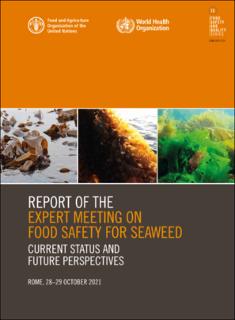| dc.contributor.author | Hurtado, Anicia | |
| dc.contributor.author | Concepcion, Anoushka | |
| dc.contributor.author | Duinker, Arne | |
| dc.contributor.author | Tiwari, Brijesh | |
| dc.contributor.author | Elvevoll, Edel O. | |
| dc.contributor.author | Yukawa, Goichiro | |
| dc.contributor.author | Levine, Ira A. | |
| dc.contributor.author | Banach, Jennifer L. | |
| dc.contributor.author | Sato, Junichi | |
| dc.contributor.author | Hayes, Maria | |
| dc.contributor.author | Hansen, Max | |
| dc.contributor.author | Abu-Ghannam, Nissreen | |
| dc.contributor.author | Potin, Philippe | |
| dc.contributor.author | Hogstad, Solbjørg | |
| dc.contributor.author | Holdt, Susan Løvstad | |
| dc.contributor.author | Doumiezel, Vincent | |
| dc.contributor.author | Vieira, Vitor Verdelho | |
| dc.contributor.author | Sato, Yoichi | |
| dc.date.accessioned | 2022-11-11T09:49:21Z | |
| dc.date.available | 2022-11-11T09:49:21Z | |
| dc.date.created | 2022-11-09T09:56:46Z | |
| dc.date.issued | 2022 | |
| dc.identifier.isbn | 978-92-5-136590-8 | |
| dc.identifier.uri | https://hdl.handle.net/11250/3031349 | |
| dc.description.abstract | The world production of marine macroalgae, or seaweed, has more than tripled since the turn of the millennium, increasing from 10.6 million tonnes in 2000 to 32.4 million tonnes in 2018. Increased cultivation and utilization of seaweed are expected to be important pillars of sustainable food security and a robust aquatic economy in the coming years. It is important, therefore, to consider the food safety implications of (increased) seaweed use for food. Many factors can affect the presence of hazards in seaweed, including: the type of seaweed, its physiology, the season in which it is produced, production waters, harvesting methods and processing. Several hazards such as heavy metals and marine biotoxins have been reported to be (potentially) associated with seaweed. However, legislation and guidance documents on the production and utilization of seaweed are generally still lacking. FAO and the World Health Organization (WHO) have therefore developed this report to identify food safety hazards (microbiological, chemical and physical) linked to the consumption of seaweed and aquatic plants. The present analysis could therefore provide a basis for undertaking further work in this area. Moreover, both FAO and WHO believe that there would be a value in developing relevant Codex guidance on this subject. | en_US |
| dc.language.iso | eng | en_US |
| dc.publisher | Food and Agriculture Organization of the United Nations (FAO) | en_US |
| dc.relation.ispartof | Food Safety and Quality Series | |
| dc.relation.ispartofseries | Food Safety and Quality Series; | |
| dc.title | Report of the expert meeting on food safety for seaweed – Current status and future perspectives | en_US |
| dc.title.alternative | Report of the expert meeting on food safety for seaweed – Current status and future perspectives | en_US |
| dc.type | Research report | en_US |
| dc.description.version | publishedVersion | en_US |
| dc.source.volume | 13 | en_US |
| dc.identifier.cristin | 2071005 | |
| dc.relation.project | Norges forskningsråd: 326803 | en_US |
| cristin.ispublished | true | |
| cristin.fulltext | original | |
| cristin.qualitycode | 1 | |
